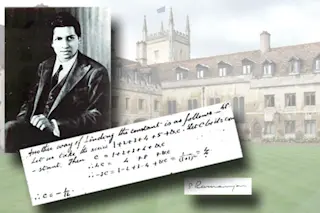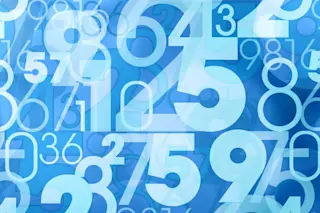A hundred and one years ago, in 1913, the famous British mathematician G. H. Hardy received a letter out of the blue. The Indian (British colonial) stamps and curious handwriting caught his attention, and when he opened it, he was flabbergasted. Its pages were crammed with equations — many of which he had never seen before. There were many kinds of formulas there, and those that first caught his attention had to do with algebraic numbers. Hardy was the leading number theorist in the world — how could he not recognize the identities relating to such numbers, scribbled on the rough paper? Were these new derivations, or were they just nonsensical math scrawls? Later, Hardy would say this about the formulas: “They defeated me completely. I had never seen anything in the least like it before!”
Now, for the first time, mathematicians have identified the mathematics behind these breakthrough scrawls ...














